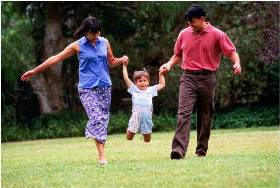Landscape Stewardship
Information for Individuals

There are many things individuals can do to support landscape stewardship both around your home and within your community.
Around the Home
We often forget that our daily activities contribute to pollution – like using our cars, maintaining our lawns, and cleaning our homes. There are things you can do to reduce the amount of pollution you and your family create. There are also changes you can make to create a "greener" home. Among them are incorporating "Green Building" techniques.
Green Building
A "Green Building" is one where the quality of both the indoor and outdoor environments have been considered and protected during its design, construction, maintenance and use. Many green building techniques are most easily incorporated into new construction; however, there are things you can do to "green" an existing home. To get you started, view:
- DEEP's Green Home Brochure
- The Green Home Guide (U.S. Green Building Council)
- A Guide to Residential Green Building in New England (U.S. EPA, 80 pp., 546 KB PDF)
Greenscaping
How landscaping is designed, installed and maintained can have significant environmental impacts. "Greenscaping" is an approach that minimizes those impacts. You can support local wildlife by converting part of your yard to butterfly or hummingbird gardens or other wildlife habitat.
Benefits
When you create a green home, you do more than make the place you live more livable, you do a service to your community by setting an example for your neighbors to follow. Individuals can also promote landscape stewardship through individual actions that:
- minimize waste;
- prevent pollution;
- control pests; and
- reduce your effect on climate change.
Special Places, Special Cases
DEEP also has information and programs that you may find helpful if you:
- Live along Long Island Sound or its coves, embayments or estuaries;
- Own property on an inland lake or pond;
- Own land with grasslands, shrublands or young forest;
- Want help with managing your forestlands; or
- Want to create or maintain wildlife habitat on your property.
Within Your Community
Be a environmentally responsible member of your community.
- Practice pollution prevention;
- Don't litter;
- Don't put anything into a storm drain;
- If you own a car or truck, make sure it is well maintained to avoid leaks, drips and air emissions and when shopping for a new vehicle, consider its long term environmental impacts; and
- Pick up pet waste and dispose of it properly.
If you are concerned about how your community is changing, learn about land use and development in Connecticut and get involved.
For information on how your municipality can incorporate landscape stewardship into its daily operations, check out The Municipal Primer - Your Guide to Creating a "Green and Growing" Community.
You can become active in local land use decision-making by:
- attending local meetings and hearings;
- become informed about local land use and inland wetlands regulations;
- become informed about the approval processes for land use and inland wetlands;
- participate, when and where appropriate, in discussions of future land use;
- volunteer to serve on a non-elected land use board or commission in your community or campaign for an elected position; and
- exercise your right to vote on Election Day.
For more ideas, please see: Environmental Protection Begins with You.
Content Last Updated May 26, 2009

